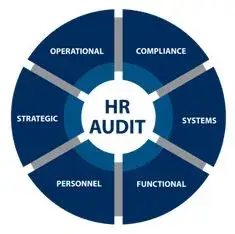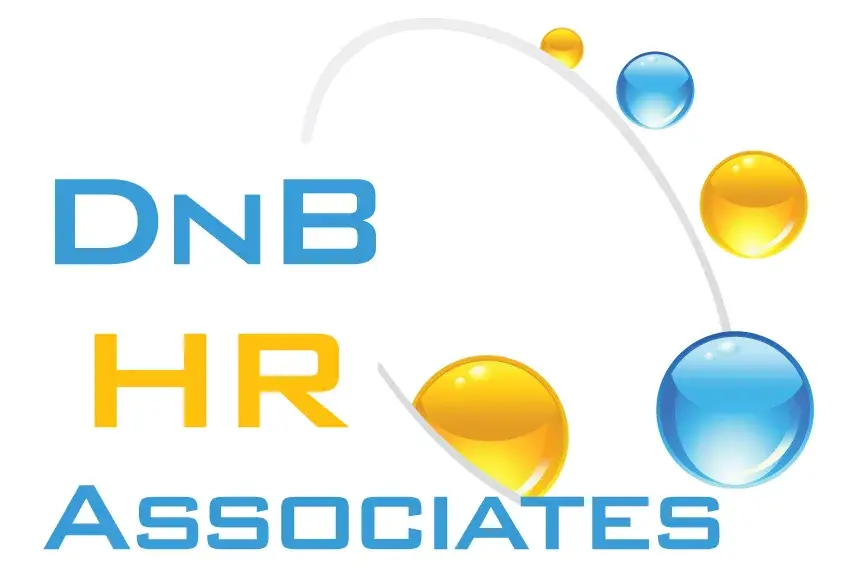Add Your Heading Text Here
HR Audit

HR Audit
A Human Resource Management (HRM) audit is a systematic evaluation of an organization's HR policies, practices, procedures, and strategies to assess their effectiveness, compliance with regulations, and alignment with organizational goals. Here are key aspects typically covered in an HR audit:Policies and Procedures
Review and evaluate the organization's HR policies and procedures to ensure they are comprehensive, up-to-date, legally compliant, and aligned with industry standards and best practices. This includes policies related to recruitment, hiring, onboarding, training, performance management, compensation, benefits, employee relations, and termination.Compliance and Legal Requirements
Determine the organization's compliance with labor laws, employment regulations, industry standards, and internal policies. Identify areas of non-compliance or potential risks and recommend corrective actions to mitigate legal and regulatory issues.Recruitment and Selection
Evaluate the effectiveness of the recruitment and selection processes in attracting, hiring, and retaining qualified candidates. Assess recruitment strategies, job postings, candidate screening methods, interviewing techniques, and diversity initiatives.Training and Development
Recap training and development programs to determine their relevance, effectiveness, and impact on employee performance, skills enhancement, career growth, and organizational success. Assess training needs, delivery methods, feedback mechanisms, and ROI (Return on Investment) on training initiatives.Performance Management
Judge performance management systems, processes, and tools used to set goals, monitor performance, provide feedback, conduct performance appraisals, identify development opportunities, and reward high performance. Appraise the fairness, transparency, and alignment of performance evaluations with organizational objectives.Compensation and Benefits
Audit compensation structures, salary levels, bonus programs, incentives, benefits packages, and other rewards to ensure competitiveness, equity, cost-effectiveness, and alignment with market trends, employee expectations, and organizational goals.Employee Relations
Assess employee relations practices, communication channels, conflict resolution mechanisms, grievance procedures, disciplinary actions, employee engagement initiatives, and organizational culture. Identify factors contributing to positive employee relations and areas needing improvement.HR Technology and Data Management
Determine the use of HRIS (Human Resource Information System), payroll software, data analytics tools, and digital platforms for HR processes, data management, reporting, and decision-making. Ensure data accuracy, security, privacy, and compliance with data protection regulations.HR Strategic Alignment
Examine the alignment of HR strategies, initiatives, and initiatives with the organization's overall strategic goals, mission, vision, and values. Assess HR's contribution to organizational success, workforce planning, talent management, succession planning, and change management efforts.HR Audit Findings and Recommendations
Compile audit findings, strengths, weaknesses, opportunities, and threats related to HR management. Develop actionable recommendations, improvement plans, and prioritized strategies to enhance HR effectiveness, address gaps, mitigate risks, and drive continuous improvement in HR practices.Overall, an HR audit provides valuable insights into the strengths and weaknesses of an organization's HR function, identifies areas for improvement, and helps optimize HR processes, policies, and strategies to support business objectives, enhance employee experiences, and achieve sustainable growth.
Quicklink
- Home
- List Item
- Our Services
- HR Consulting
- About Us
- Contact Us
Contact Us
- St. Georges Street, Port Louis, Mauritius
- https;//dnbbusinessassociates.com
- (+230) 57561873
Find Us Here
Copyright
Useful Links
Contact Us
- St. Georges Street, Port Louis, Mauritius
- https;//dnbbusinessassociates.com
- (+230) 57561873
Find Us Here
Copyright
How we can help
We will work with you to understand your requirements of the HR function, whether you would like us to focus on certain aspects as a priority and guide us towards the tasks to be completed.
We will advise on the strategic human resource management aspect so as to align HR strategy with the business strategy.
We will examine your HR Processes that include HR Planning, Recruitment, Selection, Induction, Training & Development, Performance Management, Employee Relations, Employee Pay and Benefits. We will also examine your Employee Handbook, – Policies, Procedures, Documentation and Human Resource Management Information System.
After evaluation, we will provide a report of our findings
We will be available to redress and work on the shortcomings.
Contact Us
Get in Touch
Send Us a Message
How we can help
We will work with you to understand your requirements of the HR function, whether you would like us to focus on certain aspects as a priority and guide us towards the tasks to be completed.
We will advise on the strategic human resource management aspect so as to align HR strategy with the business strategy.
We will examine your HR Processes that include HR Planning, Recruitment, Selection, Induction, Training & Development, Performance Management, Employee Relations, Employee Pay and Benefits. We will also examine your Employee Handbook, – Policies, Procedures, Documentation and Human Resource Management Information System.
After evaluation, we will provide a report of our findings
We will be available to redress and work on the shortcomings.
Contact Us
Get in Touch
Send Us a Message
ISO 30414
ISO 30414 is a standard developed by the International Organization for Standardization (ISO) titled “Human resource management – Guidelines for internal and external human capital reporting.” It provides guidelines for organizations to effectively measure and report on their human capital, encompassing aspects related to workforce composition, skills, capabilities, performance, and contributions to organizational success.
Here are key aspects and objectives of ISO 30414:
Scope: ISO 30414 addresses the need for organizations to measure and report on human capital-related metrics, both internally for strategic decision-making and externally for stakeholders, investors, regulators, and other interested parties.
Internal Reporting: The standard guides organizations on how to collect, analyze, and report human capital data internally to support HR management, workforce planning, talent development, performance management, and strategic HR decision-making.
External Reporting: ISO 30414 provides guidelines for organizations to disclose human capital information externally in a transparent, consistent, and meaningful manner. This includes reporting to investors, shareholders, customers, suppliers, regulators, and the public.
Key Metrics: The standard outlines key metrics and indicators related to human capital, such as workforce demographics, employee turnover rates, skills assessments, training investments, diversity and inclusion metrics, employee engagement scores, talent retention rates, and HR costs.
Data Collection and Analysis: ISO 30414 emphasizes the importance of accurate data collection, analysis, and interpretation to derive meaningful insights into human capital performance, capabilities, and contributions to organizational value creation.
Reporting Framework: The standard provides a framework for structuring human capital reports, including the identification of key stakeholders, determining material human capital topics, setting reporting boundaries, defining reporting periods, and selecting relevant metrics.
Integration with Strategic Objectives: ISO 30414 encourages organizations to align human capital reporting with their strategic objectives, business goals, values, and sustainability initiatives. It emphasizes the integration of human capital metrics into overall organizational performance measurement frameworks.
Continuous Improvement: The standard promotes a culture of continuous improvement in human capital management by setting guidelines for establishing baselines, setting targets, monitoring progress, benchmarking against industry peers, and reviewing the effectiveness of HR initiatives.
Stakeholder Engagement: ISO 30414 recognizes the importance of stakeholder engagement in human capital reporting. It encourages organizations to engage with stakeholders to understand their information needs, gather feedback, and enhance the relevance and credibility of human capital reports.
Global Adoption: ISO 30414 is designed to be applicable to organizations of all sizes, sectors, and geographic locations. It provides a globally recognized framework for human capital reporting that promotes transparency, accountability, and sustainability in HR management practices.
In summary, ISO 30414 is a valuable resource for organizations seeking to enhance their human capital management practices, demonstrate their commitment to transparency and accountability, and communicate the value of their workforce to internal and external stakeholders through structured and meaningful reporting.
Useful Links
Contact Us
- St. Georges Street, Port Louis, Mauritius
- https;//dnbbusinessassociates.com
- (+230) 57561873
Find Us Here
Copyright
